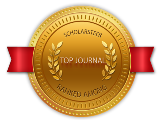Impact Assessment of Land Use Land Cover Change on Soil Erosion Status in Phewa Lake Watershed of Nepal
Pages : 1708-1717
Download PDF
Abstract
The paper assessed the impact of land use land cover (LULC) change on soil erosion status in Phewa Lake watershed of Nepal using a geographic information system-based soil erosion modeling approach with LULC change detection to quantify the influence of changing LULC on erosion risk. Four LULC maps were generated for a 15-year period (1995 through 2010) at 5-year intervals to assess LULC change and to predict the projected (2015 and 2020) LULC scenario. Revised Morgan, Morgan & Fenny (RMMF) soil erosion model was used in GIS (Geographic Information System) environment to predict soil erosion loss and also map soil erosion risk. The results of sub-watershed wise erosion status revealed that the average soil loss rate increased in all sub-watersheds from 1995 to 2020 of each change study periods. In Mid (MS) sub-watershed highest soil loss was observed while, North Flowing System (NFS) sub-watershed showed lowest soil loss in all study periods. Other sub-watershed soil loss rates lied in between. The result of prioritization of sub-watersheds in terms of soil conservation planning showed that Mid (MS) and South Flowing System (SFS) Sub-watershed are falling in highest priority class while other sub- watersheds are falling in medium to least priority in all study periods. The erosion increased in Open Forest, Bush/Scrub and Waste Land from 1995 to 2010 because of some unscientific cultivation practice, deforestation and settlement expansion. In case of other LULC classes, erosion was slightly lower during the period due to conservation practice. Similar trends of change were seen for predicted 2015 and 2020. The increasing Waste Land bush/Scrub and Open Forest leads to increased soil erosion risk, which matched with LULC change. This study highlights the interaction of changes in land use with soil erosion potential. Soil erosion risk can be quantified by incorporating various erosion factors such as LULC, soil, rainfall, terrain – slope and rainfall with geographic information system and remote sensing, which could serve as a tool for the rapid assessment of effects of LULC change on erosion risk for land/watershed management planning.
Keywords: Soil erosion modeling, RMMF model, Remote sensing, GIS, erosion risk assessment
Article published in International Journal of Current Engineering and Technology, Vol.5, No.3 (June-2015)












 MECHPGCON, MIT College of Engineering, Pune, India
MECHPGCON, MIT College of Engineering, Pune, India AMET, MIT College of Engineering, Pune, India
AMET, MIT College of Engineering, Pune, India International Conference on Advances in Mechanical Sciences
International Conference on Advances in Mechanical Sciences  International Symposium on Engineering and Technology
International Symposium on Engineering and Technology International Conference on Women in Science and Engineering
International Conference on Women in Science and Engineering




